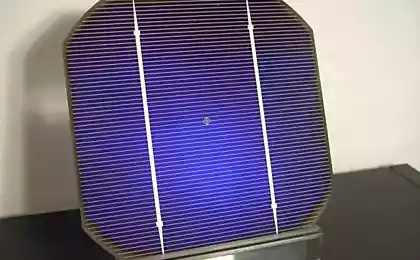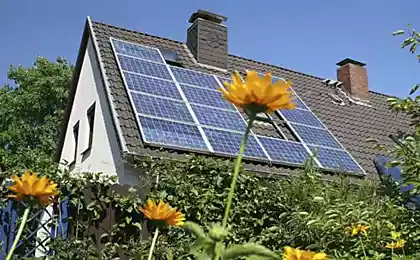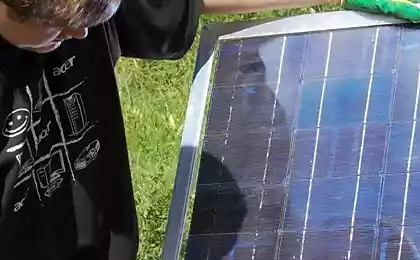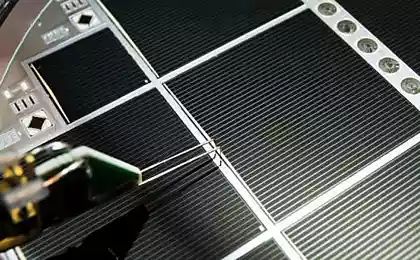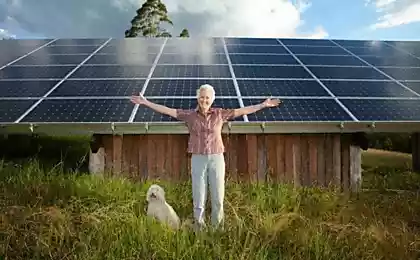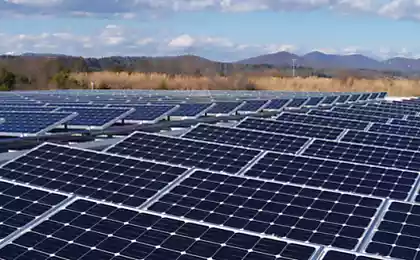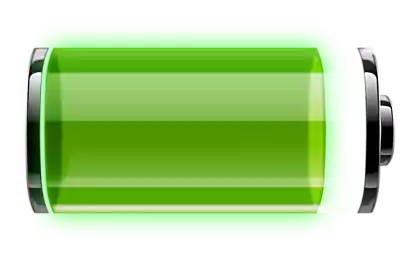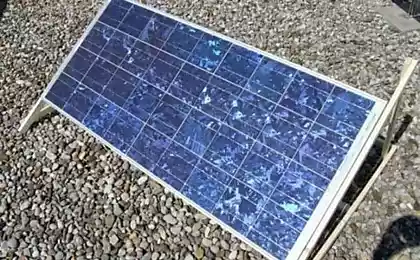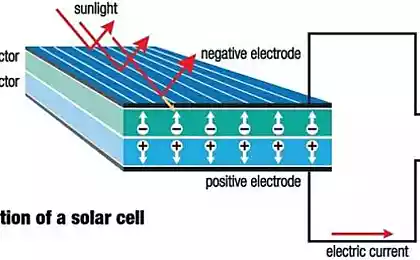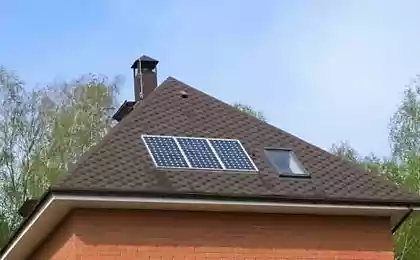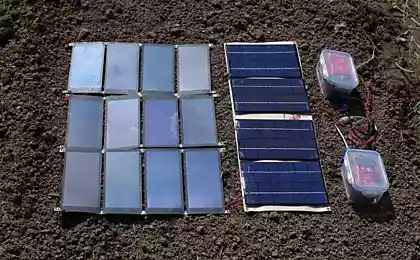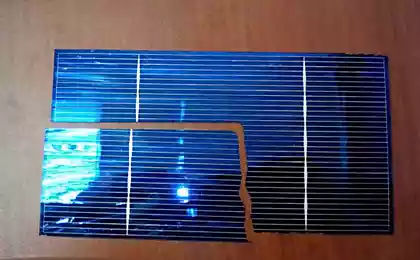448
35%: new record efficiency solar cells put Australian scientists
Scientists from the University of New South Wales (UNSW) set a new world record for the amount of energy that solar panels can generate from sunlight.
According to representatives of the University, in the study, the engineers managed to achieve efficiency solar cells is 44 percent more than in the previous record with 24 percent received an American manufacturer of solar cells, Alta Devices.
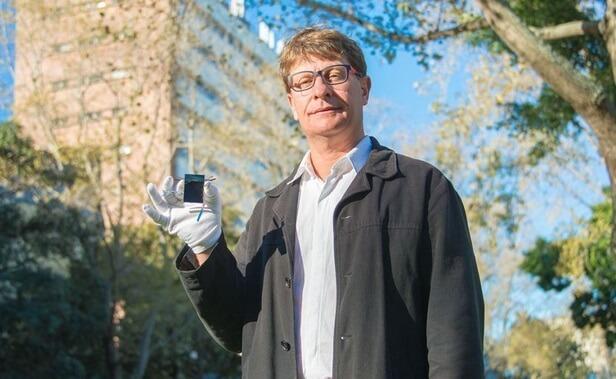
A device used by Australian researchers, converts nearly 35 percent of the sunlight into electricity and, according to them, this could be a breakthrough discovery for the future of the solar industry.
Professor Martin green (Martin Green), the Director of the Australian centre for UNSW's photovoltaics technology, said that this level of efficiency is achieved by new configurations, and previously it was assumed that such performance will not be achieved for years to come.
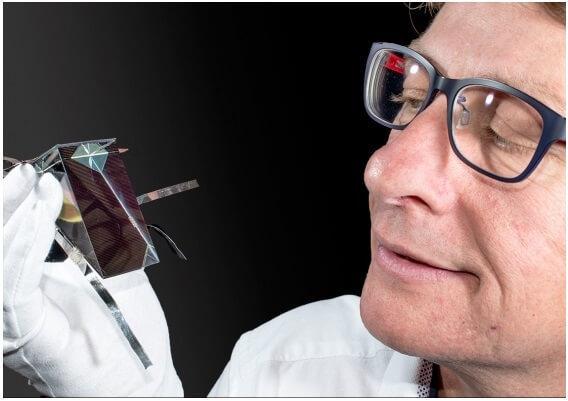
"A recent study conducted in Germany, Agora Energiewende Institute found that in the most optimistic scenario, to achieve a 35 percent efficiency would be possible only by 2050 (for modules that use unconcentrated sunlight, such as those that are installed on the roofs of private houses), says Professor green. — So everything is moving much faster in terms of performance solar panels than expected by many experts, and this is good news for solar energy."Such a high efficiency has been obtained by splitting sunlight into four separate range. New solar cell contains four different layers of different materials (silicon, indium-gallium-phosphide, indium-gallium-arsenide and germanium), each of which absorbs a different range.
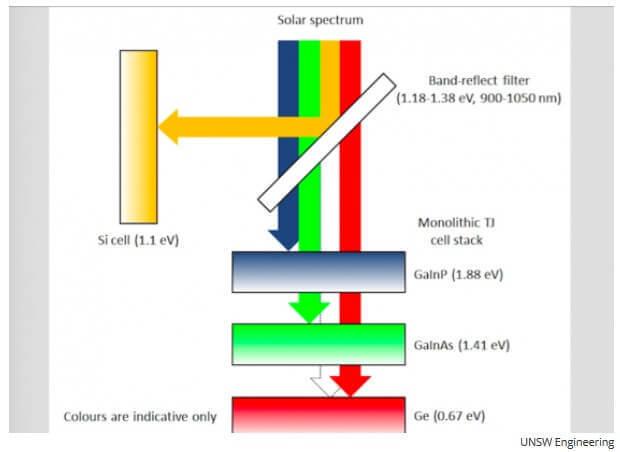
Diagram of splitting spectra of a new photocell
At this stage it is too early to speak about the appearance of this technology in conventional solar cells due to the high cost of their production. However, a group of scientists at UNSW says that they are actively working on the significant reduction of the cost of these "multispectral" solar cells.
It is believed that the theoretical limit of efficiency for solar cells of this type is about 53 percent.
"This encouraging result shows that still a lot of opportunities to advance in photovoltaics technology that will make solar panels even more efficient, — says senior researcher of the center for Advanced Voltaics Dr. mark of kivers (Mark Keevers). — The maximum energy from each individual beam of sunlight is crucial to reduce the cost of electricity produced by solar panels because this lowers the required investment and reduces the payback period."The surface area of super-efficient solar module, developed in Australia, is 28 square centimeters. Currently, UNSW scientists are planning to create a battery of 800 square centimeters, as the previous record holder – battery Alta Devices – had such dimensions.
P. S. And remember, only by changing their consumption — together we change the world! ©
Join us in Facebook , Vkontakte, Odnoklassniki
Source: ecotechnica.com.ua/energy/solntse/1118-teper-35-novyj-rekord-effektivnosti-solnechnykh-batarej-postavili-avstralijskie-uchenye.html
According to representatives of the University, in the study, the engineers managed to achieve efficiency solar cells is 44 percent more than in the previous record with 24 percent received an American manufacturer of solar cells, Alta Devices.

A device used by Australian researchers, converts nearly 35 percent of the sunlight into electricity and, according to them, this could be a breakthrough discovery for the future of the solar industry.
Professor Martin green (Martin Green), the Director of the Australian centre for UNSW's photovoltaics technology, said that this level of efficiency is achieved by new configurations, and previously it was assumed that such performance will not be achieved for years to come.

"A recent study conducted in Germany, Agora Energiewende Institute found that in the most optimistic scenario, to achieve a 35 percent efficiency would be possible only by 2050 (for modules that use unconcentrated sunlight, such as those that are installed on the roofs of private houses), says Professor green. — So everything is moving much faster in terms of performance solar panels than expected by many experts, and this is good news for solar energy."Such a high efficiency has been obtained by splitting sunlight into four separate range. New solar cell contains four different layers of different materials (silicon, indium-gallium-phosphide, indium-gallium-arsenide and germanium), each of which absorbs a different range.

Diagram of splitting spectra of a new photocell
At this stage it is too early to speak about the appearance of this technology in conventional solar cells due to the high cost of their production. However, a group of scientists at UNSW says that they are actively working on the significant reduction of the cost of these "multispectral" solar cells.
It is believed that the theoretical limit of efficiency for solar cells of this type is about 53 percent.
"This encouraging result shows that still a lot of opportunities to advance in photovoltaics technology that will make solar panels even more efficient, — says senior researcher of the center for Advanced Voltaics Dr. mark of kivers (Mark Keevers). — The maximum energy from each individual beam of sunlight is crucial to reduce the cost of electricity produced by solar panels because this lowers the required investment and reduces the payback period."The surface area of super-efficient solar module, developed in Australia, is 28 square centimeters. Currently, UNSW scientists are planning to create a battery of 800 square centimeters, as the previous record holder – battery Alta Devices – had such dimensions.
P. S. And remember, only by changing their consumption — together we change the world! ©
Join us in Facebook , Vkontakte, Odnoklassniki
Source: ecotechnica.com.ua/energy/solntse/1118-teper-35-novyj-rekord-effektivnosti-solnechnykh-batarej-postavili-avstralijskie-uchenye.html




